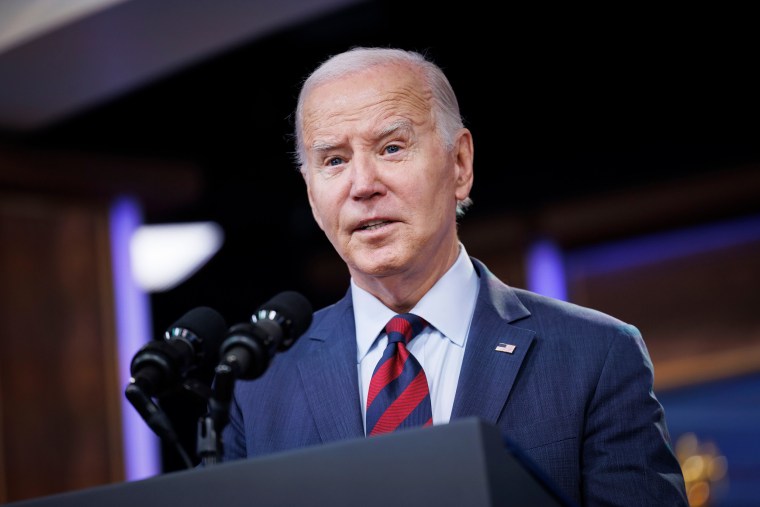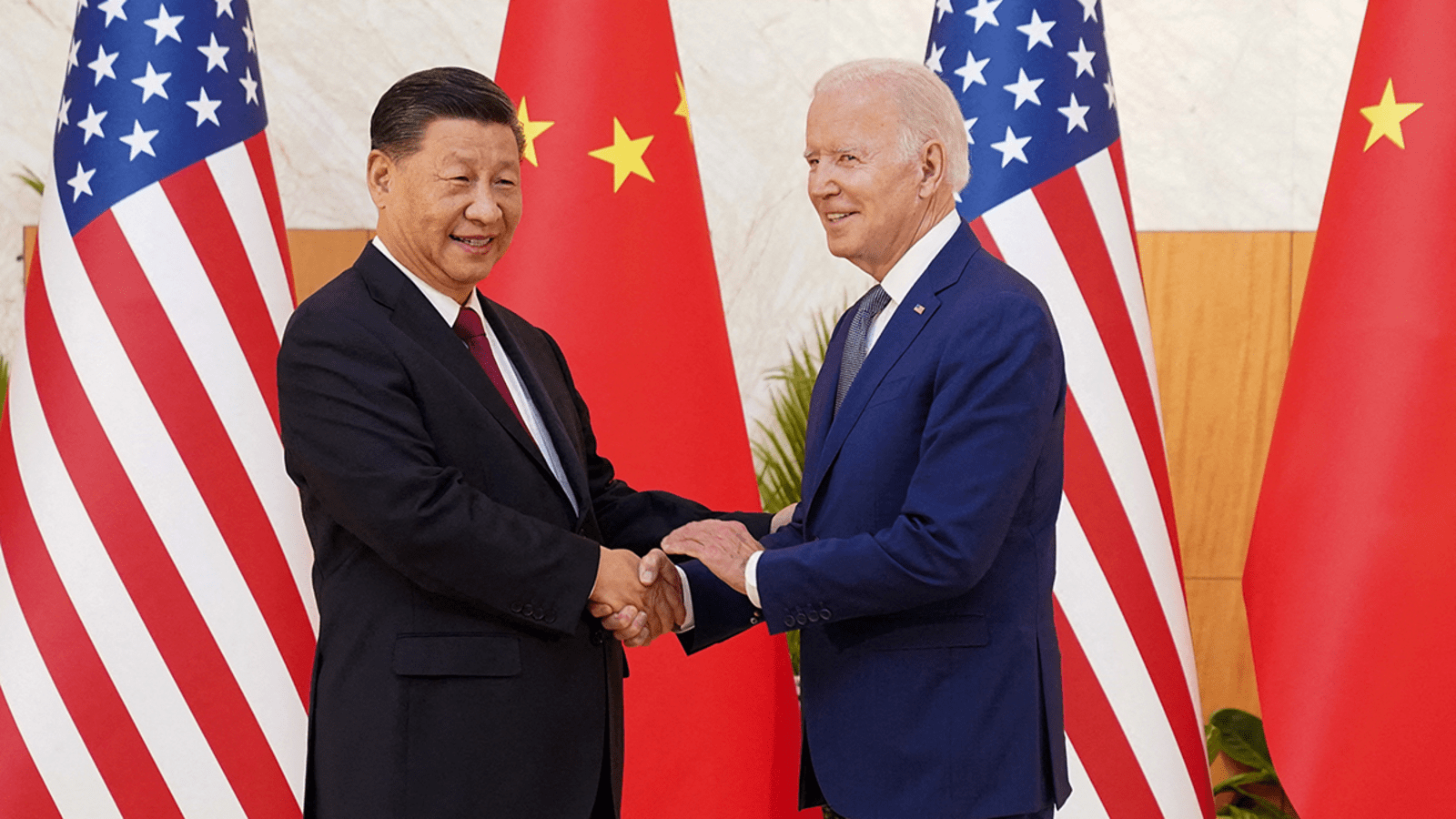Trump's Rhetoric And Biden's Response: A Study In Political Discourse

Table of Contents
Trump's Rhetorical Strategies: Populism, Nationalism, and Divisive Language
Populism and the Appeal to the Base
Trump's political success hinges significantly on his masterful use of populist rhetoric. He employed simple language, often bypassing nuanced policy discussions in favor of emotionally charged appeals directly to his base. This strategy effectively mobilized his supporters, fostering a strong sense of loyalty and belonging.
- Use of simple language and emotional appeals: Trump frequently used slogans and catchphrases, bypassing complex explanations. His rallies were characterized by emotional appeals, fostering a sense of shared grievance and purpose.
- Direct attacks on perceived enemies (media, political opponents): Trump consistently targeted the "fake news media" and his political opponents, portraying them as enemies of the people. This strategy solidified his image as a fighter for his supporters.
- Focus on "us vs. them" narratives: Trump consistently created an "us vs. them" dichotomy, pitting his supporters against the "elites," the "deep state," and the "liberal media." This narrative fostered strong group identity and loyalty.
Nationalism and "America First"
Trump’s "America First" policy was a cornerstone of his nationalist rhetoric. This approach prioritized national interests above international cooperation, impacting foreign policy and domestic discussions significantly.
- Emphasis on national sovereignty and protectionism: Trump championed protectionist trade policies, advocating for tariffs and restrictions on imports to protect American jobs and industries.
- Criticism of international agreements and alliances: Trump questioned the value of international agreements such as the Paris Climate Accord and the Iran nuclear deal, prioritizing unilateral action.
- Promotion of a strong military and assertive foreign policy: Trump advocated for increased military spending and a more assertive foreign policy, often challenging traditional alliances.
Divisive Language and the Creation of an "In-Group/Out-Group"
Trump's frequent use of inflammatory language contributed significantly to the polarization of American politics. His rhetoric often created an "in-group" (his supporters) and an "out-group" (his opponents), exacerbating social divisions.
- Use of derogatory terms and personal attacks: Trump frequently employed personal attacks and derogatory terms against his opponents, further fueling the polarization.
- Spread of misinformation and conspiracy theories: Trump's rhetoric often included misinformation and conspiracy theories, contributing to a climate of distrust and uncertainty.
- Creation of a climate of polarization and distrust: His divisive language fueled political polarization, making constructive dialogue and compromise increasingly difficult.
Biden's Counter-Strategies: Emphasizing Unity, Facts, and Empathy
A Focus on Unity and Bipartisanship
In contrast to Trump's divisive rhetoric, Biden consistently emphasized the need for unity and bipartisanship. He aimed to bridge the political divide and appeal to a broader range of voters.
- Calls for compromise and cooperation: Biden repeatedly called for compromise and cooperation between political parties, emphasizing the need for collaboration to solve national problems.
- Emphasis on shared values and common goals: Biden often focused on shared American values and common goals, attempting to unite people across ideological lines.
- Attempts to appeal to moderate voters: Biden's rhetoric consciously targeted moderate voters, seeking to build a broad coalition.
Fact-Based Arguments and the Rejection of Misinformation
Biden’s approach directly countered Trump’s frequent dissemination of misinformation. He prioritized fact-based arguments and the correction of false statements.
- Use of evidence-based arguments and data: Biden consistently supported his claims with evidence and data, presenting a stark contrast to Trump’s often unsubstantiated assertions.
- Corrections of false statements and misleading claims: Biden actively corrected false statements and misleading claims made by Trump and his allies.
- Focus on promoting media literacy: Biden implicitly promoted media literacy by emphasizing the importance of verifying information from reliable sources.
Empathy and Emotional Appeals
Biden utilized empathy and emotional appeals to connect with voters on a personal level, contrasting with Trump's more confrontational style.
- Use of personal anecdotes and stories: Biden often shared personal anecdotes and stories to illustrate his points and connect with voters on an emotional level.
- Expressions of concern for the well-being of citizens: Biden frequently expressed concern for the well-being of ordinary Americans, particularly those struggling economically or facing social challenges.
- Attempts to connect with voters on an emotional level: Biden’s communication style aimed to foster a sense of connection and understanding, promoting empathy and compassion.
Comparing and Contrasting Rhetorical Styles and Their Impacts
Trump's populist, nationalist, and divisive rhetoric successfully mobilized his base but alienated many others, contributing to heightened political polarization. Biden's emphasis on unity, facts, and empathy aimed to bridge divides but faced challenges in effectively countering Trump's powerful messaging. The effectiveness of each style varied depending on the audience and the specific political context. The long-term impact on the political landscape remains a subject of ongoing debate, with concerns about the lasting effects of divisive language and the erosion of trust in institutions.
Conclusion: The Lasting Effects of Contrasting Rhetorical Approaches
This analysis of "Trump's Rhetoric and Biden's Response" highlights the profound impact of contrasting communication styles on political discourse. Trump’s populist and divisive approach, while effective in mobilizing his base, fueled polarization and distrust. Biden's focus on unity, facts, and empathy offered a counter-narrative but struggled to fully counteract the influence of Trump's rhetoric. Understanding Trump's Rhetoric and Biden's Response is crucial for navigating the complexities of modern political discourse. Further research into these contrasting styles is essential for fostering informed civic engagement and promoting a more constructive political environment.

Featured Posts
-
 Kid Cudis Personal Belongings Fetch High Bids At Recent Auction
May 16, 2025
Kid Cudis Personal Belongings Fetch High Bids At Recent Auction
May 16, 2025 -
 La Liga Live Stream Watch Barcelona Vs Real Betis Online For Free
May 16, 2025
La Liga Live Stream Watch Barcelona Vs Real Betis Online For Free
May 16, 2025 -
 Keine Streiks Mehr Bei Der Bvg Details Zur Tarifeinigung
May 16, 2025
Keine Streiks Mehr Bei Der Bvg Details Zur Tarifeinigung
May 16, 2025 -
 Tampa Bay Rays Sweep Padres In Commanding Fashion
May 16, 2025
Tampa Bay Rays Sweep Padres In Commanding Fashion
May 16, 2025 -
 Analysis The Turning Point In Us China Trade Relations
May 16, 2025
Analysis The Turning Point In Us China Trade Relations
May 16, 2025
